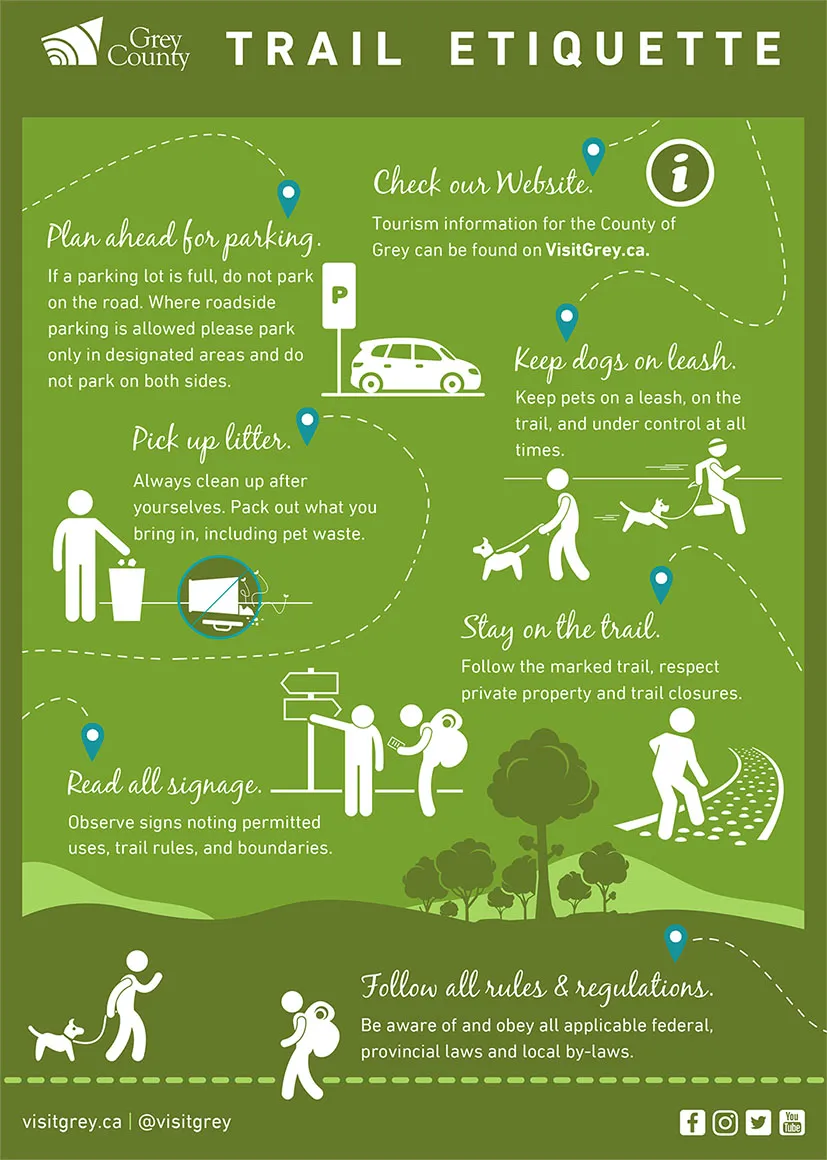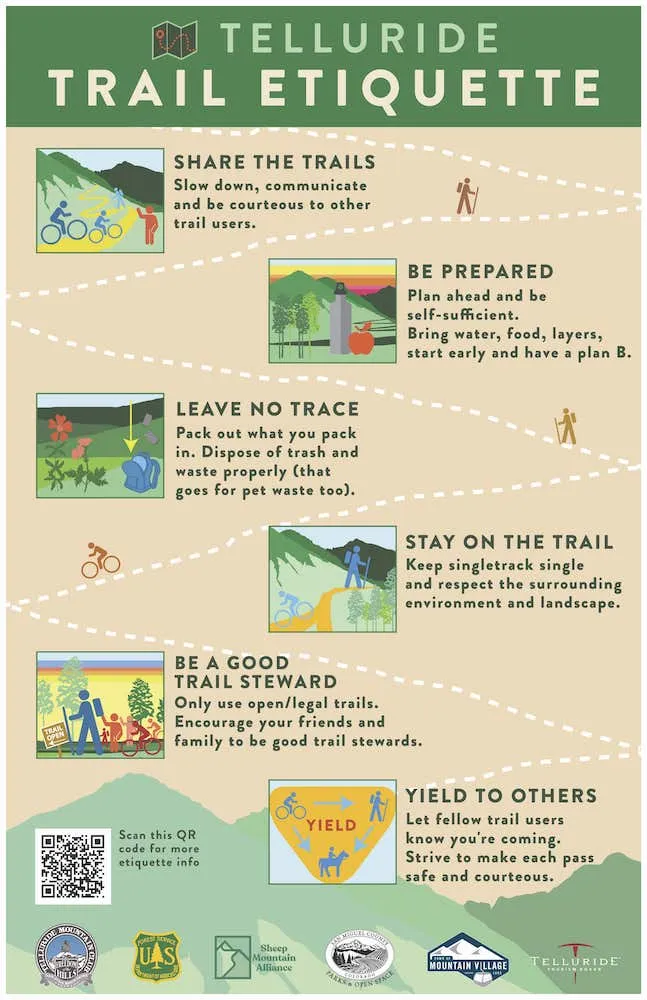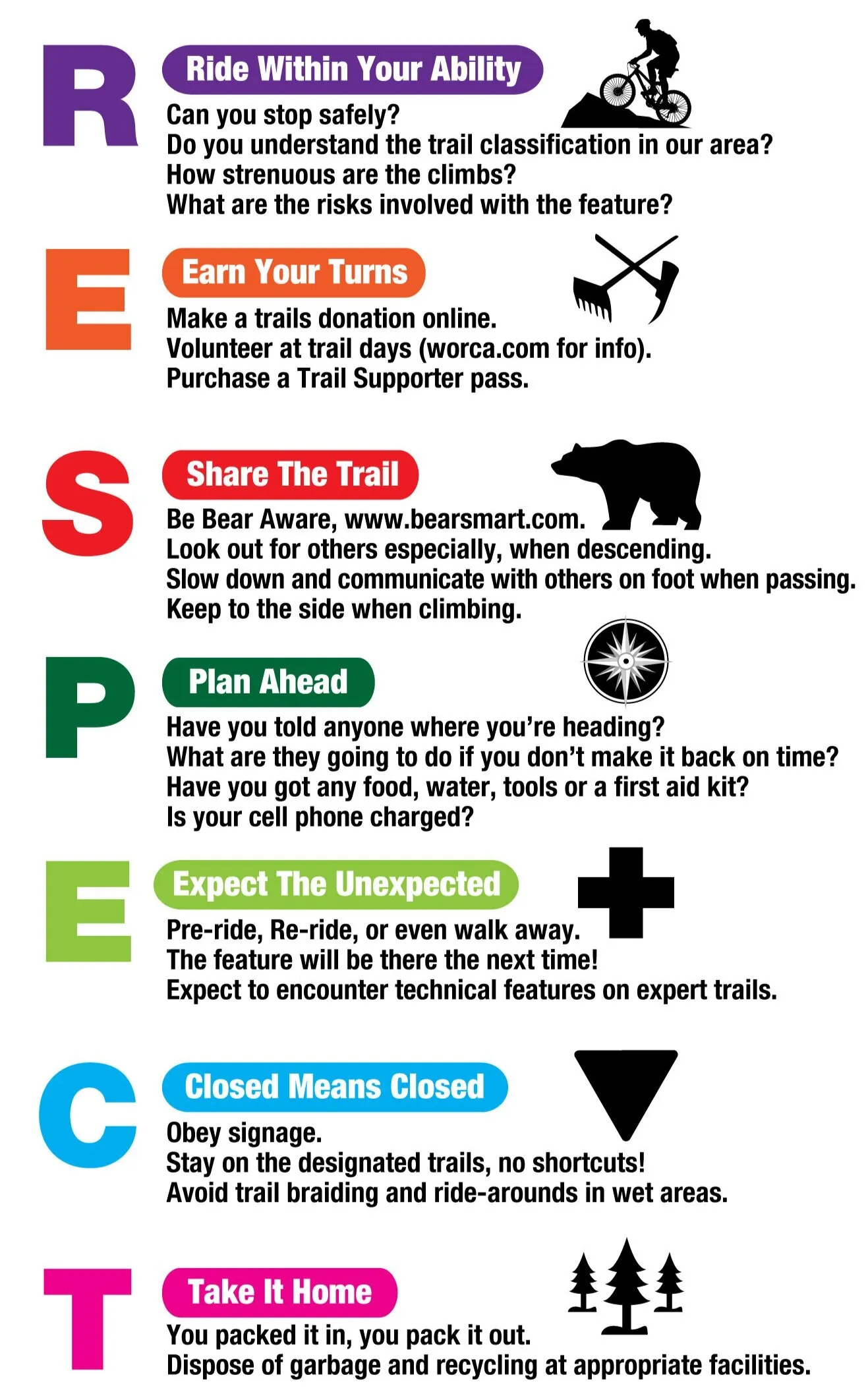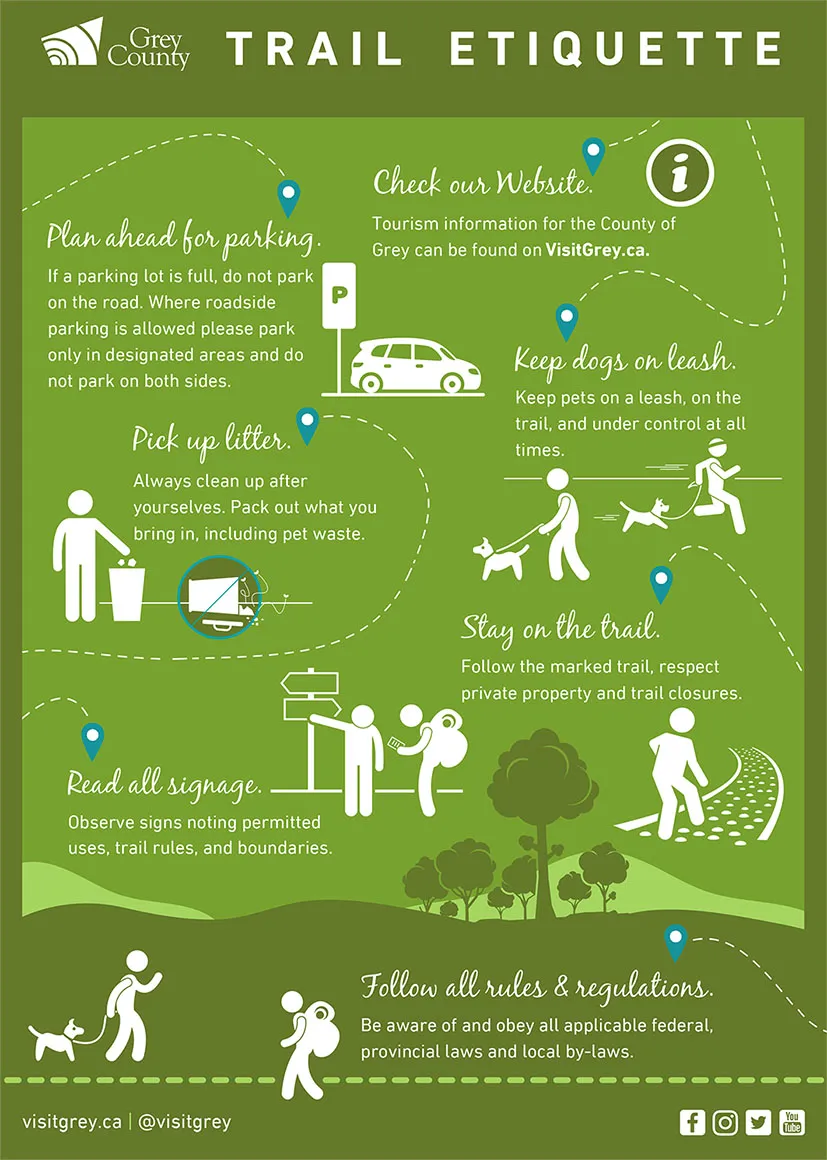
The Ultimate Guide to Trail Etiquette Rules: Mastering Hiking Courtesy for a Better Outdoor Experience
As someone who has spent over fifteen years exploring trails across North America, I've learned that understanding proper trail etiquette rules is just as important as having the right gear. Whether you're a beginner hiker or an experienced outdoor enthusiast, these essential guidelines will help you become a respectful trail user while enhancing everyone's outdoor experience. At Nature Guests, we believe that following proper trail courtesy creates lasting memories and preserves our natural spaces for future generations.
Understanding Trail Etiquette Fundamentals

During my first solo hike on the Appalachian Trail in Vermont, I encountered a group of hikers who completely disregarded basic trail etiquette rules. They were playing loud music, leaving trash behind, and blocking the entire width of the trail while taking photos. That experience taught me the critical importance of understanding and practicing proper trail courtesy. Hiking ethical guidelines form the foundation of responsible outdoor recreation.
Trail etiquette goes beyond simple politeness—it serves as a set of safety guidelines that safeguard both hikers and the environment. These unwritten rules have developed over decades of outdoor recreation, shaped by park rangers, seasoned hikers, and trail organizations across the country. Embracing these principles elevates you from a casual trail user to a responsible steward of the outdoors.
The foundation of all trail etiquette rules rests on the golden rule: treat others and nature the way you want to be treated. This simple principle guides every interaction, from yielding the right-of-way to maintaining proper noise levels. I've found that hikers who embrace this mindset create positive ripple effects throughout the hiking community, inspiring others to follow suit.
Modern trail systems serve millions of users annually, from day hikers to thru-hikers, mountain bikers to equestrians. This diversity requires clear guidelines to ensure everyone can enjoy their outdoor experience safely and respectfully. Rangers at popular destinations like Yellowstone and Yosemite consistently report that conflicts between trail users decrease dramatically when everyone understands and follows basic etiquette principles.
Right of Way Rules Every Hiker Must Know
Understanding right-of-way rules represents one of the most fundamental aspects of trail etiquette rules. During a challenging ascent of Mount Washington, I learned these rules the hard way when I failed to yield properly to a group of descending hikers. The narrow rocky section became congested, creating safety risks for everyone involved. This experience reinforced why these guidelines exist and how they prevent dangerous situations.
The Universal Right-of-Way Hierarchy
- Hikers ascending have right-of-way over descending hikers
- Horseback riders have right-of-way over all other trail users
- Hikers have right-of-way over mountain bikers
- Larger groups yield to smaller groups when practical
The logic behind uphill hikers having right-of-way stems from momentum and energy conservation. Ascending requires significantly more effort, and stopping mid-climb breaks rhythm and increases fatigue. However, I've encountered situations where uphill hikers voluntarily yielded to take a rest break – flexibility and common sense should always guide these interactions.
When yielding to horses, step downhill whenever possible and avoid sudden movements or loud noises. During a ride through Bryce Canyon's multi-use trails, our guide explained that horses can spook easily, potentially endangering both riders and nearby hikers. Speaking calmly to announce your presence helps horses and riders prepare for the encounter.

Mountain bikers face unique challenges in following trail etiquette rules. Their speed and momentum make yielding more complex, requiring greater awareness and planning. Responsible mountain bikers I've encountered always dismount when approaching hikers on narrow trails, demonstrating excellent trail courtesy. Trail courtesy tips emphasize the importance of communication and predictable behavior in these interactions.
Get the Osprey Hikelite Backpack - Perfect for Day Hikes!Leave No Trace Principles in Practice
The integration of Leave No Trace principles into daily trail etiquette rules transforms casual hikers into environmental stewards. My perspective on this concept crystallized during a backpacking trip in the Cascade Mountains, where I discovered a pristine alpine lake marred by abandoned campsites and scattered trash. That moment sparked my commitment to not just following but actively promoting these essential guidelines.
Leave No Trace principles provide the framework for responsible outdoor recreation. The seven core principles – plan ahead, travel on durable surfaces, dispose of waste properly, leave what you find, minimize campfire impact, respect wildlife, and be considerate of other visitors – directly support proper trail etiquette implementation.
Pack It In, Pack It Out: Beyond the Basics
Every item you bring to the trail should return with you, including:
- Food scraps and biodegradable waste
- Toilet paper and hygiene products
- Micro-trash like energy bar wrappers
- Apple cores and banana peels (not native to most ecosystems)
Staying on designated trails prevents erosion and protects fragile vegetation. During spring wildflower season in California's Sierra Nevada, I witnessed hikers creating social trails to photograph lupine and paintbrush displays. These shortcuts damage root systems and create lasting scars on the landscape. Proper trail etiquette rules require remaining on established paths regardless of photography opportunities.
Water source protection demands special attention in trail etiquette. I learned this lesson while camping near a backcountry stream in Olympic National Park, where a ranger explained how soap residue and food particles, even biodegradable ones, disrupt aquatic ecosystems. All washing and food preparation should occur at least 200 feet from water sources, following established protocols.
The "leave what you find" principle extends beyond obvious artifacts to include natural objects like antlers, interesting rocks, and even fallen leaves arranged in patterns. These items serve ecological functions and provide discovery opportunities for future visitors. How to follow Leave No Trace guidelines helps hikers understand the reasoning behind these seemingly restrictive rules.
Shop Merrell Moab Hiking Boots - Trail-Tested Comfort!Wildlife Encounters and Respectful Behavior

Wildlife encounters represent both the magic and responsibility inherent in trail etiquette rules. My most memorable experience occurred during an early morning hike in Great Smoky Mountains National Park, where I rounded a bend to find a black bear foraging just 30 feet ahead. My response – standing still, speaking calmly, and slowly backing away – reflected years of learning proper wildlife protocols. This encounter reinforced why respecting wildlife boundaries protects both animals and humans.
Maintaining appropriate distances from wildlife requires understanding species-specific guidelines. National Park Service regulations mandate staying at least 25 yards from most wildlife and 100 yards from bears and wolves. However, these distances represent minimums – wildlife behavior and environmental conditions may require greater separation. Rangers in Yellowstone consistently remind visitors that telephoto lenses, not proximity, create the best wildlife photography.
Never Feed Wildlife: The Hidden Consequences
Feeding wildlife creates dangerous dependencies and behavioral changes:
- Animals lose natural foraging skills
- Human food causes malnutrition and disease
- Fed animals become aggressive toward humans
- Problem animals often require relocation or euthanization
Proper food storage represents a critical component of wildlife-focused trail etiquette rules. During backpacking trips in bear country, I've witnessed the consequences of improper food storage – destroyed campsites, aggressive bears, and dangerous encounters. Bear canisters, hanging systems, and designated food lockers protect both wildlife and visitors while maintaining natural behaviors.
Smaller wildlife deserves equal respect in trail etiquette protocols. Ground-nesting birds, salamanders, and alpine plants face threats from seemingly harmless human activities. Staying on trails prevents trampling fragile habitats, while quiet movement reduces stress on wildlife. I've learned to approach trail intersections slowly, watching for small animals that might not move quickly enough to avoid foot traffic.
Dog owners face additional responsibilities in wildlife-rich environments. Even well-trained dogs can chase or harass wildlife, disrupting feeding patterns and nesting behaviors. Leash requirements exist on most trails, but responsible pet ownership extends beyond legal compliance to include waste removal and noise control. Proper trail etiquette rules for pets ensure that our four-legged companions enhance rather than diminish the outdoor experience.
Stay Hydrated with YETI Rambler Water Bottle!Group Hiking and Communication Etiquette
Group dynamics significantly influence how effectively trail etiquette rules are implemented and maintained. Leading hiking groups for over a decade has taught me that proper communication and organization prevent most trail conflicts before they begin. My approach to group management evolved through experience, particularly during a challenging traverse of the Presidential Range where poor group coordination created safety issues and frustrated other trail users.
The fundamental principle of group hiking etiquette centers on maintaining single-file formation on narrow trails. This simple rule prevents trail widening, reduces erosion, and allows other hikers to pass easily. However, implementing this principle requires constant awareness and gentle reminders, especially with inexperienced hikers who naturally want to walk beside friends for conversation.
Effective Group Communication Strategies
- Designate a sweep hiker to monitor the group's rear
- Establish hand signals for common situations
- Use normal speaking voices instead of shouting across distances
- Brief everyone on etiquette expectations before starting
Managing different fitness levels within groups requires careful planning and flexibility. The slowest hiker should set the pace, preventing the group from becoming strung out over long distances. I've learned to identify potential pace disparities during pre-hike discussions, allowing for route modifications or group splitting when necessary. This approach maintains group cohesion while respecting individual limitations.
Volume control becomes especially critical with larger groups following trail etiquette rules. Natural excitement and social interaction can escalate noise levels, disrupting wildlife and other hikers' solitude. I implement "quiet zones" near sensitive areas like nesting sites or wilderness boundaries, helping group members understand when extra discretion is necessary.
Rest stop management demonstrates respect for other trail users and environmental protection. Large groups should move completely off-trail during breaks, ensuring continued traffic flow and preventing trampling of vegetation. Established rest areas and trail junctions provide ideal stopping points, but groups must remain aware of their impact on these high-use locations.
Emergency preparedness takes on added complexity with groups, requiring clear communication protocols and designated responsibilities. Each group member should understand basic trail etiquette for emergencies, including how to signal for help and maintain scene safety. Trail etiquette rules for emergency situations can prevent panic and ensure appropriate responses to challenging situations.
Essential Gear for Respectful Trail Use
The right equipment significantly supports proper implementation of trail etiquette rules. Throughout my hiking journey, I've discovered that certain gear items directly enable respectful trail behavior while enhancing safety and comfort. My gear philosophy emphasizes multi-functional items that support both personal needs and environmental stewardship.
A quality hiking backpack with external attachment points allows for proper waste management and emergency preparedness. External pockets provide easy access to trash bags, first aid supplies, and bear spray when needed. I've found that hikers with well-organized packs are more likely to follow Leave No Trace principles because proper storage makes compliance easier and more convenient.
Trail Etiquette Gear Essentials
- Lightweight trowel for proper waste disposal
- Collapsible water bottles to minimize pack-out weight
- Quiet-sole hiking boots to reduce noise impact
- Biodegradable soap for minimal-impact cleaning
- Reflective markers for emergency signaling
Proper footwear directly impacts trail preservation and hiking courtesy. Boots with aggressive tread patterns can damage delicate trail surfaces, especially in wet conditions. I've transitioned to lighter-weight options with moderate tread designs that provide adequate traction while minimizing environmental impact. This gear choice reflects the broader principle that responsible hikers consider their equipment's ecological footprint.
Navigation tools support trail etiquette rules by preventing hikers from getting lost and creating unauthorized trails. GPS devices, detailed maps, and compasses enable confident navigation that keeps groups on designated routes. During a fog-bound traverse of New Hampshire's White Mountains, proper navigation tools prevented our group from wandering off-trail and potentially creating new social paths.
Black Diamond Trekking Poles - Stability & Trail Protection!Communication devices serve dual roles in trail etiquette – enabling emergency responses while facilitating group coordination. Two-way radios allow large groups to communicate without shouting across distances, reducing noise pollution while maintaining safety oversight. Satellite communicators provide emergency backup in remote areas, supporting the principle that responsible hikers prepare for self-rescue scenarios.
Water treatment and storage systems enable proper hydration without relying on single-use bottles that create waste issues. Lightweight filtration systems allow hikers to utilize natural water sources responsibly, reducing pack weight while maintaining Leave No Trace compliance. I've found that hikers who invest in quality water treatment systems develop greater appreciation for watershed protection and water source conservation.
Emergency shelter and signaling equipment supports both personal safety and broader trail community welfare. Space blankets, emergency whistles, and first aid supplies enable hikers to respond appropriately to unexpected situations without requiring immediate external rescue. This self-sufficiency reduces impacts on rescue services while demonstrating advanced trail etiquette rules understanding.
Conclusion
Mastering trail etiquette rules transforms hiking from a personal recreation activity into a form of environmental stewardship and community building. Throughout my decades of outdoor experience, I've witnessed how proper etiquette creates positive ripple effects – respectful hikers inspire others, protected environments thrive, and trail communities strengthen through mutual consideration and shared values.
The principles discussed in this guide – understanding right-of-way protocols, implementing Leave No Trace practices, respecting wildlife boundaries, managing group dynamics, and selecting appropriate gear – work synergistically to create memorable outdoor experiences for everyone. These guidelines aren't restrictive rules but rather frameworks for maximizing both personal enjoyment and environmental protection.
Remember that trail etiquette continues evolving as outdoor participation grows and environmental challenges change. Stay connected with land management agencies, hiking organizations, and experienced outdoor educators to learn about emerging best practices and regional variations in trail etiquette rules. Your commitment to respectful trail use contributes to the long-term sustainability of outdoor recreation opportunities.
Every hike presents opportunities to practice and refine these essential skills. Whether you're exploring local trails or embarking on wilderness adventures, approaching each outing with courtesy, preparation, and environmental awareness ensures that future generations will inherit the same opportunities for outdoor discovery and personal growth that we enjoy today.
Ready to put these trail etiquette rules into practice?
Join thousands of responsible hikers who make every trail experience better for everyone.
Patagonia Houdini Jacket - Weather Protection Done Right!
